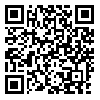BibTeX | RIS | EndNote | Medlars | ProCite | Reference Manager | RefWorks
Send citation to:
URL: http://rjms.iums.ac.ir/article-1-1005-en.html
Background & Aim: Febrile seizures are the most common type of childhood seizures. Despite numerous researches which have been done on various aspects of the problem such as genetic ground, risk factors for the recurrence of seizures, probable development of epilepsy, etc., many aspects of it still remain obscure. Therefore, investigations are being conducted in different centers around the world. Considering many reports about the increased frequency of the occurrence of seizures in special seasons and parts of the day, we conducted this study to find whether any special pattern exists in the occurrence of this event.
Patients and Method: In a descriptive cross-sectional study, the medical files of 221 children aged 6 months to 5 years who were admitted with febrile seizure to the pediatric ward of Rasoul-e-Akram Hospital were reviewed. Patients' data including age, gender, etiology of fever, season and time of seizures were collected. Mean ± SD was used to define quantitative variables. Chi-square, one-way ANOVA and t-tests were used to analyze the data.
Results: The mean age of the children was 29.09(±18.64) months. The occurrence of febrile seizures was as follows: 39 children(17.6%) presented with febrile seizures in spring, 58(26.3%) in summer, 47(21.3%) in autumn, and 77(34.8%) in winter. The occurrence of febrile seizures was significantly more common in winter, especially in January (p<0.015). Considering circadian rhythm, more seizures occurred in the afternoon(12 MD to 5:59 PM) and evening(6 PM to 11:59 PM) than at night(12 MN to 5:59 AM) and in the morning(6 AM to 11:59 AM).
Conclusion: In our study febrile seizures occurred more frequently in winter compared to other seasons of the year. In addition, the frequency of the occurrence of seizures in the evening and afternoon was significantly higher than other parts of the day.





